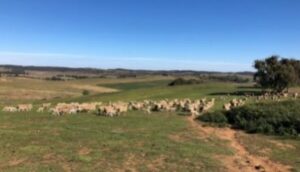Read the latest information on
Foot-and-mouth disease
 Usually when you purchase sheep, they will be recently shorn. While this will significantly reduce lice numbers, it does not eliminate them and can make it difficult to identify lice when inspecting the sheep. However, there are additional steps you can take to help minimise the chance of infestation and spread among your flock.
Usually when you purchase sheep, they will be recently shorn. While this will significantly reduce lice numbers, it does not eliminate them and can make it difficult to identify lice when inspecting the sheep. However, there are additional steps you can take to help minimise the chance of infestation and spread among your flock.
Declaration
The first (and arguably most important) step to take is to request a National Sheep Health Declaration (NSHD) with any purchased sheep. The NSHD is your assurance that the sheep you purchase should be free from lice and some diseases. Question 5 asks about lice and Section C notes any previous treatments administered to the sheep, giving you a clear starting point for your treatment plan moving forward.
Inspection
Before settling the purchase, you should always inspect the sheep you are purchasing to identify lice. Lice are attracted to the warmth of the body (37 degrees Celsius) so you may see them close to the body or along the wool staple depending on the ambient temperature. To ensure your inspection is thorough, always inspect 10 partings on either side of the sheep (20 partings/head).
Quarantine
It usually takes 5–6 months for a lice infestation to be properly identified (and 3–4 months for a low burden to become high) so it is also important to quarantine any new sheep for up to 6 months, this gives you adequate time to identify, treat, and eradicate the infestation.
Vets often receive calls about lice during lambing when sheep have long wool and have lambs at foot. Administering treatment when sheep have long wool will only reduce numbers but won’t eradicate lice entirely. It’s important to consistently treat sheep at the appropriate times (post shearing or off shears) and avoid cross contamination with new potentially infected sheep.
Eradication
Eradication can only happen when all sheep are treated off shears in a clean muster. If sheep with long wool have previously been treated, you will ideally treat them off shears using a product with a different active ingredient.
To avoid continued infestations of your flock, use effective treatment plans, and make sure you request a National Sheep Health Declaration every time you buy new sheep.
These forms are freely available online here and can save you a lot of money and months of hassle.